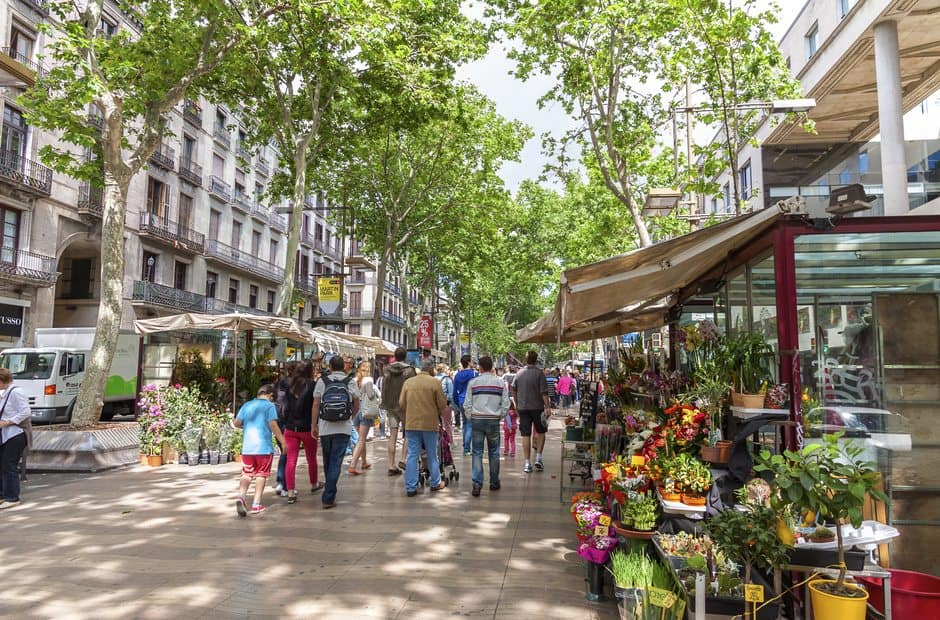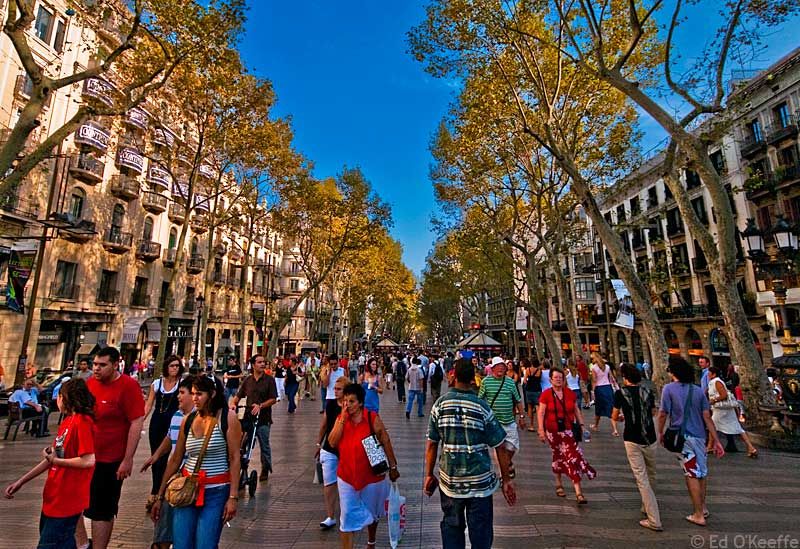La Rambla – The Most Famous Street in Barcelona
La Rambla, also known as Las Ramblas, is one of Barcelona’s main thoroughfares and one of the most visited areas in the city. This fascinating artery is 0.8 miles (1,3 km) long and connects Plaça de Catalunya with the city’s old port.
Las Ramblas is always lively, packed with tourists, locals and street artists who pose like living statues. Numerous terraces and restaurants are located on both sides of the street and it is very enjoyable to sit in one of its terraces to see people come and go, although be warned that the prices are a little high, since this is a very touristic area.
Parts of La Rambla
La Rambla is divided into a succession of shorter streets and this is why it is sometimes called Las Ramblas in plural. Here is a list with the several “Ramblas”, starting from Plaça Catalunya:
- Rambla de Canaletes: Located in the highest part of Las Ramblas, next to Plaça de Catalunya, this street is always crowded and bustling.
- Rambla dels Estudis: It is called “Street of the Studies” after the former Jesuit University that used to exist on this site. It is also know as La Rambla de los Pájaros (Bird’s street) since an old Bird’s Market used to be located in this area.
- Rambla de Sant Josep: The most colourful and scented part of La Rambla is full of flower and plant shops that brighten even the greyest of days. In this area is the Boquería Market.
- Rambla dels Caputxins: Also called Rambla del Centro, this street houses numerous landmarks like the Palau Güell, the Gran Teatre del Liceu and the nearby Plaça Reial.
- Rambla de Santa Mònica: The Rambla de Santa Mònica is a lively area packed with bars and restaurants. At the end of the boulevard, just before getting to the seafront, you’ll come across the Mirador de Colom (Columbus Monument).
View of La Rambla from Mirador de Colom
Walking down La Rambla
2See photo gallery
La Pedrera
Gothic Quarter
You may also be interested in
-
La Pedrera
Casa Milá, known by most as La Pedrera for its unusual façade, is a surprising modernist building designed by Gaudí between 1906 and 1912.
-
Gothic Quarter
Barcelona’s Gothic Quarter (Barri Gòtic) is situated in the district of Ciutat Vella. It is the center of the old town of Barcelona and is one of the most remarkable parts of the city.
9 Things to do in Las Ramblas Barcelona
299
shares
Las Ramblas is Barcelona’s most famous street. But why? Because of the many things to do in Barcelona, Las Ramblas perfectly expresses Spain’s atmosphere and the city’s character.
Everyone who visits the city goes there to walk the entire pedestrian avenue from Plaça de Cataluña to the waterfront. But what’s there to do in Las Ramblas?
Here are nine things you should look for when touring this lively avenue in the heart of one of the most visited cities in Europe.
Top Things to do in Las Ramblas Barcelona
Some interesting facts about Barcelona you might need to learn is that while people talk about a pedestrian street, it is five streets.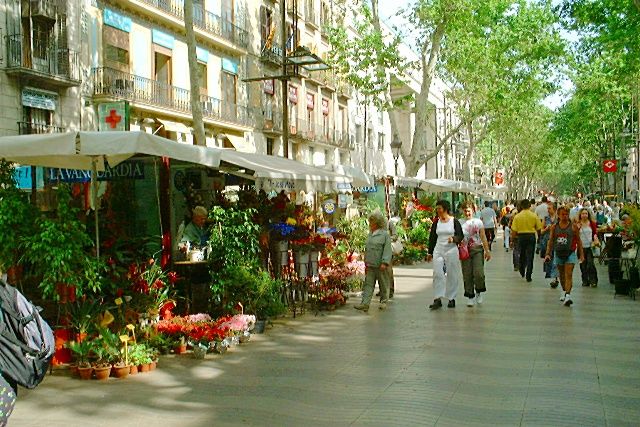
It ensures hours of fun from live music, street performers, great food, and a deeper look into Spanish culture. Here are the things you must catch while here.
1. Watch the Street Performers
Start your walk along the avenue by looking at the street performers.
Human statues are nothing unique to Las Ramblas. However, what is characteristic of this avenue is the overwhelming amount of statuesque performers found throughout its stretch.
You’ll almost feel like you are walking through a live and interactive open-air sculpture museum.
Since there’s a lot of competition, performers tend to up their game by creating even more outstanding costumes, impressive routines, bigger acrobatic stunts, and more.
2. Eat at La Boqueria Market
La Boqueria is Barcelona’s flagship market. You’ll find the freshest seafood and some of the best local food in the city.
But beyond being a market, La Boqueria also has some excellent tapas restaurants. Naturally, these chefs use garden-fresh ingredients bought at the market.
Since it is a trendy tourist market, you should expect to pay more than usual (contrary to common city markets). But still, it is an experience you shouldn’t skip.
3. Hit Palau de la Virreina and Other Museums
Right on Las Ramblas, the Palau de la Virreina and the Centre d’Art Santa Monica both have contemporary art exhibitions.
But, if contemporary art is not your thing, you can check the wax museum with replicas of famous people (similar to Madame Tussauds) or even peek at the erotic side of Barcelona at their Erotic Museum!
4. See a Show at the Liceu
Built in the 18th century, the Gran Teatre del Liceu is Barcelona’s most famous theater. Though it is famous for opera, you can also see other performances throughout the year.
Between enjoying the enchanting performances, don’t forget to look up. Outside, you have the beautiful facade facing Las Ramblas. While inside, you can see the intricate details in the foyer and roof.
It’s safe to say that this theater celebrates magnificent art in all forms.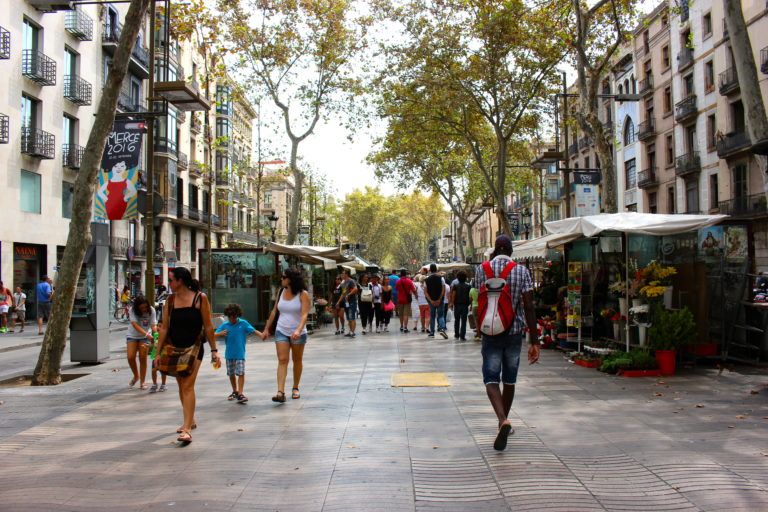
5. Get Lost in Barri Gotic
Also known as Barcelona’s “old town” or “Gothic Quarter,” it is the city’s most famous district. In fact, it is also considered one of the best places to stay in Barcelona due to its rich history and old-town charm.
Just walking its narrow, labyrinth-like alleys is an experience in itself. Plus, you can hunt for a few of Gaudí’s buildings hidden in this tight quarter.
You can find great hotels in Barcelona, in both the old and new areas. But I always recommend staying in the heart of the city, the Gothic Quarter.
6. Relax in Plaça Reial
This plaza is slightly off the avenue, but this slight deviation is hands down one of the best things to do near La Rambla.
Plaça Reial has a very picturesque environment, which makes it an excellent place to have a coffee and look at the Gaudí lampposts (the first public works attributed to the architect).
If you’re there by night, watch a flamenco show in Los Tarantos or spend the night in one of its nightclubs.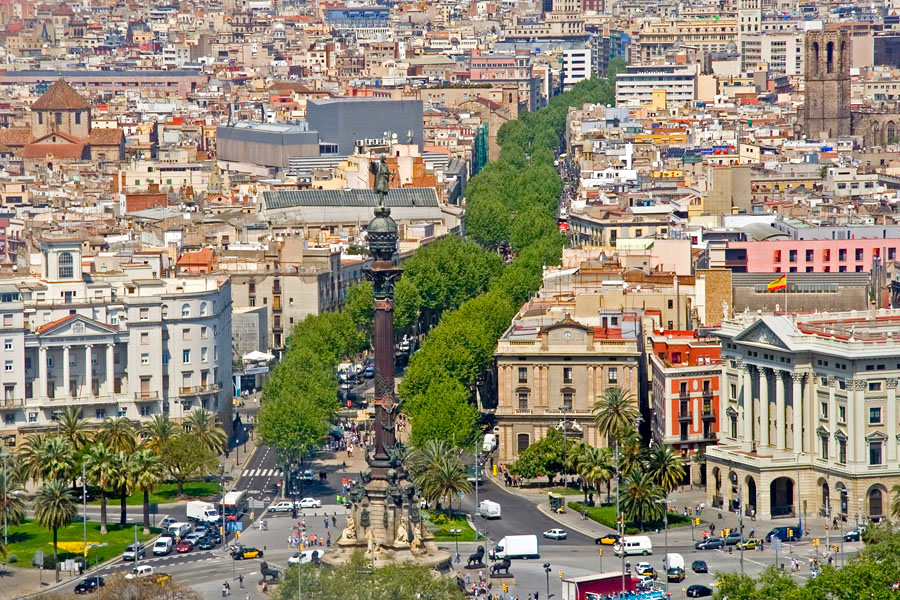
I highly recommend buying tickets ahead for Los Tarantos as it is one of the most popular flamenco shows in the city. You can buy them online here.
7. Set Aside Some Time for Coffee or Snacks
One of the best things to do in Barcelona, no matter where you are, is to enjoy its food. Las Ramblas is no different.
Many cafés along the avenue still conserve the looks and environment that made them characteristic a century ago. Take a break from walking by going into one of the cafés to snack on some sweets and coffee.
Cafè de l’Òpera and ARTiSA Barcelona are the most popular cafes. Both serve excellent coffee, churros, and cakes. But if you’re looking for something slightly different, go to the eclectic El Bosc de Les Fades.
Its interior looks like a forest and offers great activities like a wax museum and gift shop for an unforgettable time.
8. Look Up at the Architecture
Seeing the city’s unique and iconic architecture is one of my favorite things about Barcelona.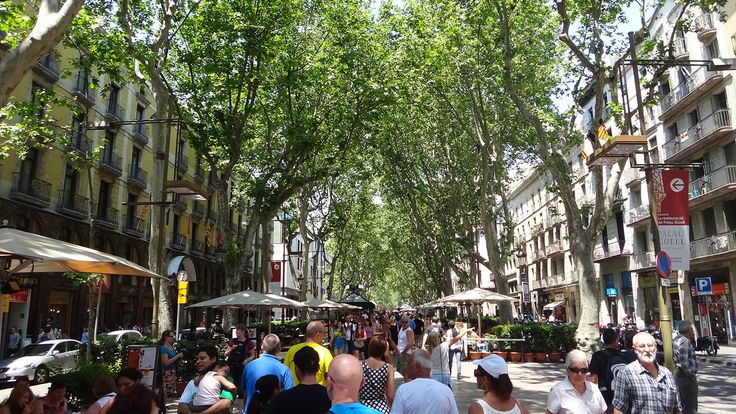
Upon first impression, most buildings might look the same and all commercial on the ground level, but once you look up, the beauty and uniqueness of all those buildings come to life.
Today there’s a mix of primarily historic buildings with a few modern buildings contrasting the scenery.
A building that presents some great contrast to what’s found along the avenue is the Baroque Esglesia de Betlem.
9. Go up the Christopher Columbus Monument
Not too far from Plaça de Catalunya, at the end of Las Ramblas, by the waterfront, is the Columbus Monument. As you can guess, it was dedicated to the famous explorer Christopher Columbus.
The Columbus Monument might look narrow, but you can go up to the tiny viewing tower! You can get one of the best city’s best views from up there, but be aware that it is not for claustrophobic people.
What to Do in Las Ramblas
Indeed, Barcelona’s Las Ramblas is no typical avenue. These five streets cover the Las Ramblas Barcelona market, museums, galleries, shops, bars, and cafes.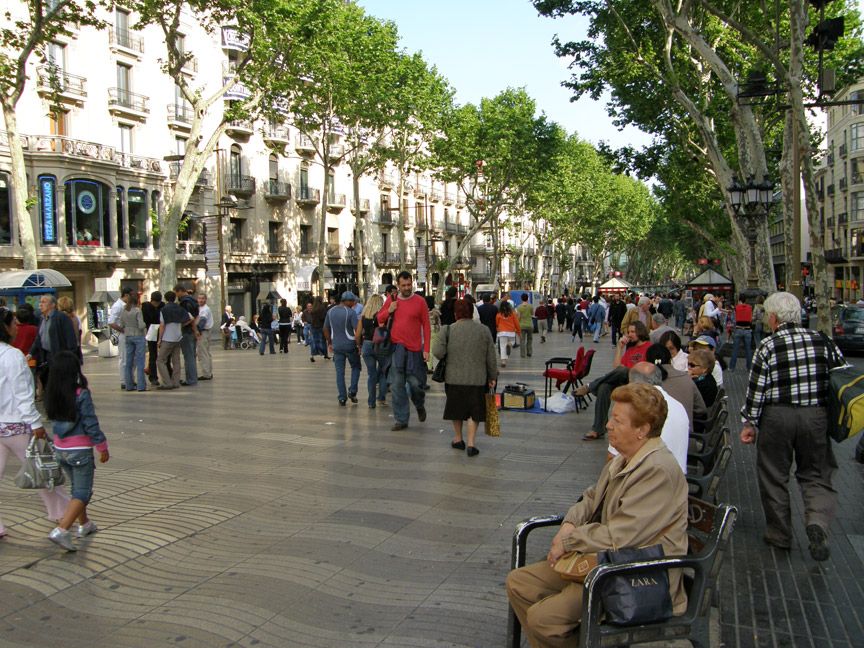
So, take your time to enjoy Las Ramblas tours, the local environment, and getting lost in its surroundings. That’s the best way to experience it!
299
shares
photos and reviews – NGS.TOURISM
Show map
Hide map
Rambla (La Rambla)
The heart of the city is where life does not stop even for a second. In Barcelona, this is Las Ramblas (or Rambla) – a boulevard that “pumps” not blood, but tourist flows. This is 1.2 kilometers of contrasts, diversity and the opportunity to get from the Gothic Quarter to Raval and vice versa.
Pedestrian street is tiled with a wavy pattern that visually transforms a flat and two-dimensional pavement into an asphalt sea. On both sides of this “reservoir” cars move along two narrow lanes of the road.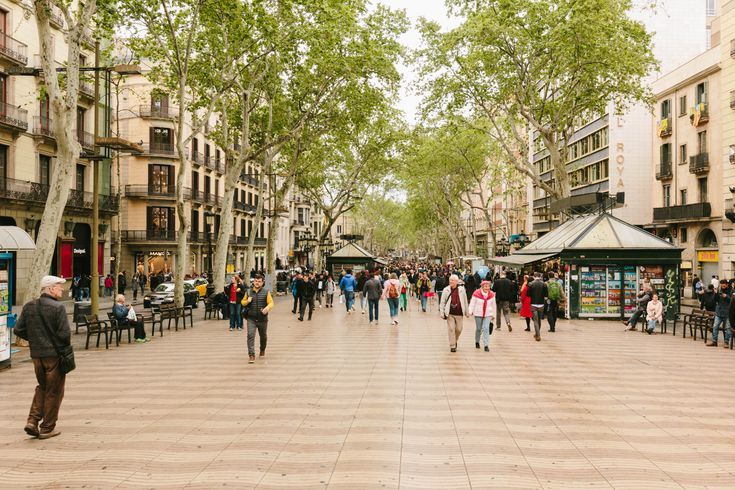
The Ramblas, like the city as a whole, can be divided into two parts: prosperous and so-so. During the day, the borders are blurred, but at night everything becomes clear when the south of the boulevard turns into Tverskaya.
The route connecting Plaza Catalunya and Portal de la Pau is actually consists of 5 boulevards , that’s why it is not called Rambla, but Ramblas!
- The section closest to Plaça Catalunya, Canaletes , is named after a 19th century cast-iron drinking fountain. The plate on the cast-iron “old man” promises everyone who has drunk mutual love with Barcelona and a quick return here. Maybe that’s why he’s so popular! There are also those who come to the fountain “on business”, and not for “comebacks” – Barça fans gather here.
-
The next mini-rumble was named Scientist when there really was a university here, but Philip the Fifth, King of Spain, moved it to Cervera.
Now the “smart” ramble sells birds, and there is also the Baroque Church of Our Lady of Bethlehem and the Poliorama Theater.
- The Rambla of Flowers , sometimes called St. Joseph Boulevard, starts at the corner of Portaferris, where the Viceroy’s Palace is located, where the widow of the Viceroy d’Amata lived. From here you can get to Boqueria, the chicest market in the city. And to admire the Miró mosaic, you need to look at Pla del Os and look at the sidewalk.
- At the house of Bruno Quadras, Capuchin Boulevard begins, within which the Liceu Gran Theater Opera, a monument to Frederic Soler and the oldest theater in Barcelona, the Principal, are located.
- If you smell the sea, you take Saint Monica’s ramble , which ends at the Gates of the World. The central position is occupied by an 80-meter column with Columbus at the top. Nearby are beautiful customs buildings and shipyards.
-
Some join to Las Ramblas pedestrian bridge , which people follow to the large shopping center “Maremagnum”, built right on the water.
Throughout the route, tourists and residents of the city are entertained by “live” sculptures, street artists and cartoonists, musicians and mimes. And also, “on the spot” you can visit museums of wax figures and erotica.
The Ramblas has 3 metro stations , so you can get anywhere from here and just as easily come back.
141 views for April,
201 for March,
9643 total
“data-postfix=”
“>
-
Rafting in Maslyanino
Nikonovo-Legostaevo 5 days to sail?
Kostya Koshkin, 05.10.22 16:57
Posts: 18 -
We are looking for fellow travelers HERE!
We are going to Aktra in early September.
We are looking for fellow travelers for a transfer from Kuray to the alpine camp. Then back.
Tentatively, September 1-3 – up, 6-8 – down.mwalker, 08/14/22 12:44 PM
Posts: 605 -
Jeeps on the Karatyurek weather (2600 m above sea level)
On the Karatyurek weather (2600m, the highest weather in Russia) on July 25, guys from N-ska climbed in 5 cars.
Michael_Elena,
Posts: 0
Las Ramblas – Barcelona, Catalonia, Spain: TravelPoisk
Las Ramblas or simply the Ramblas is the main street of Barcelona. The word rambla is borrowed from Arabic and means a dry river bed. The main boulevard of Barcelona was founded in 1775. The boulevard is divided into five streets, passing one into another. Each has the word rambla in its name, and together they are called Las Ramblas.
Las Ramblas or simply the Ramblas is the main street in Barcelona. The word rambla is borrowed from Arabic and means a dry river bed. The main boulevard of Barcelona was founded in 1775. The boulevard is divided into five streets, passing one into another. Each has the word rambla in its name, and together they are called Las Ramblas.
The Rambla begins at Plaza Catalunya (Plaa de Catalunya), where the nine largest streets of Barcelona converge. One of the most famous and largest department stores in the city of El Corte Inglés is also located here.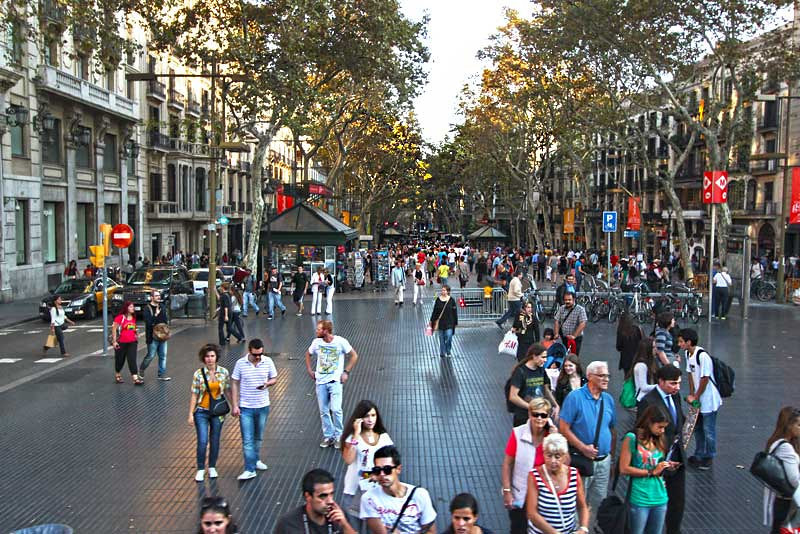
At the other end is the Theatrical Arch, beyond which begins the Rambla del Estudio (Bird Street, as the people of Barcelona call it). Once the University of El Estudio was located here, moved by Philip V of Bourbon to Cervera. This area is called Bird Street because there is a bird market here, where they sell not only birds, but also other domestic animals. On the Rambla del Estudio are: the Royal Academy of Sciences and Arts (the first building in Barcelona to have a city clock) and the Moja Palace, built in the classical style in 1790
Next is the Rambla de Sant Josep, or de les Flore (street of flowers).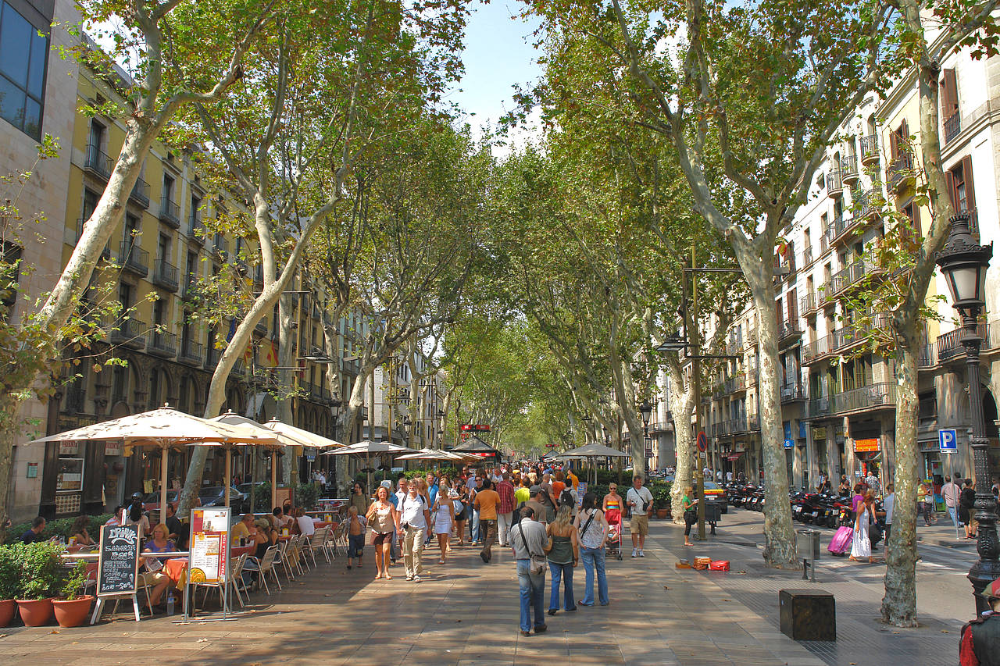
The fourth section of Las Ramblas is the Rambla dels Capuchins, named after the Capuchin monastery that used to be here. Now it is the artistic center of the city, here is the famous Liceu theater, one of the most famous in the world, according to some sources, the best in Europe in terms of acoustics and the second after La Scala in Milan in terms of the number of seats. At the intersection of the Rambla dels Caputchins and the Nou de la Rambla, Antoni Gaudí’s famous Palazzo Güell is located, a building stylized both in Gothic and Moorish style.

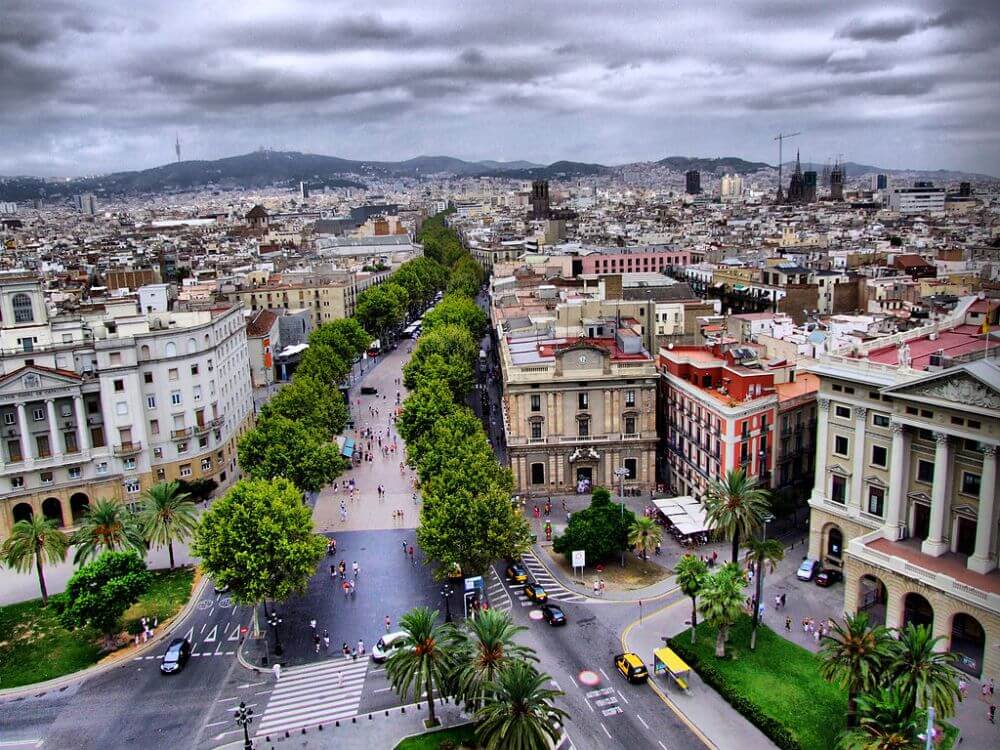
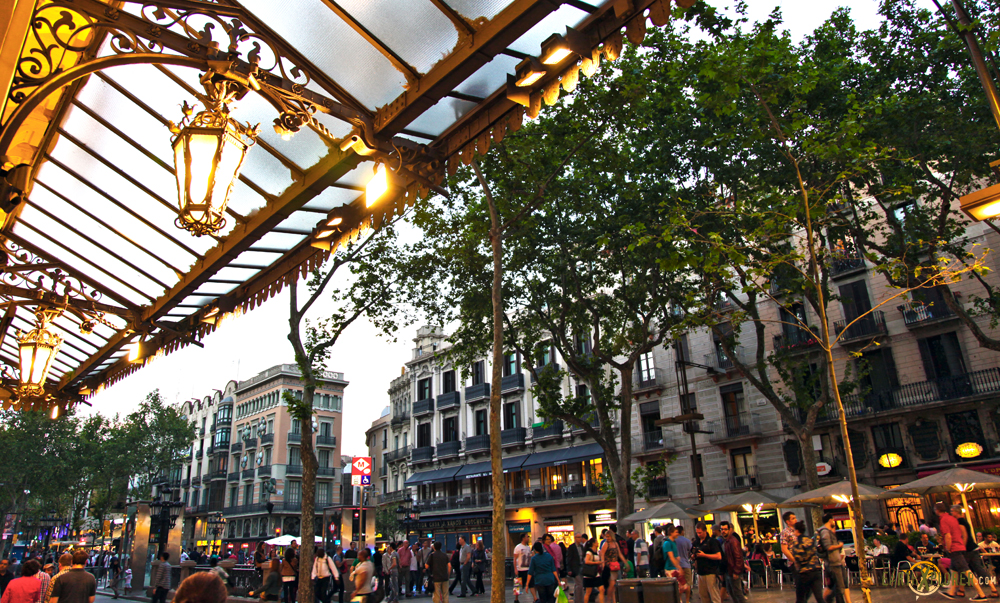 Now the “smart” ramble sells birds, and there is also the Baroque Church of Our Lady of Bethlehem and the Poliorama Theater.
Now the “smart” ramble sells birds, and there is also the Baroque Church of Our Lady of Bethlehem and the Poliorama Theater. 
